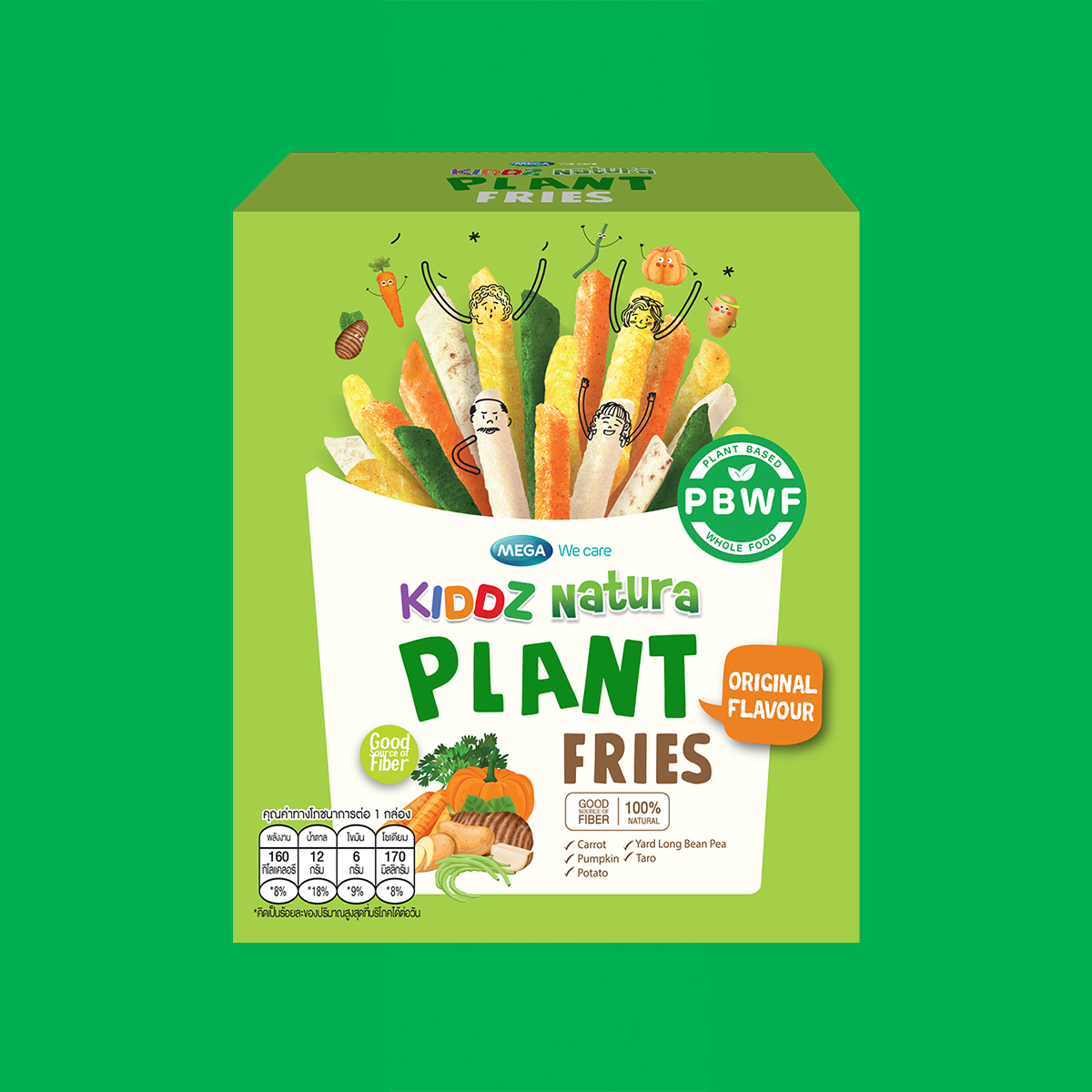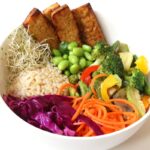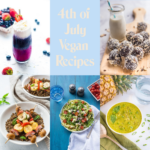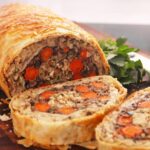Imagine a world where kid-friendly meals are not only fun and tasty but also packed with nutritional goodness. Forget the greasy, processed nuggets and fries of the past; we’re diving into the vibrant realm of plant-based alternatives designed specifically for growing children. This exploration will cover everything from creating mouthwatering recipes to understanding the nutritional benefits and sustainable sourcing of ingredients, ensuring your little ones enjoy a delicious and healthy meal.
We’ll guide you through a step-by-step recipe, complete with vivid descriptions of each stage, transforming simple ingredients into crispy, golden nuggets and fries. We’ll also discuss creative serving suggestions and dipping sauces to make mealtimes an exciting adventure. Discover how to make plant-based eating not just a healthy choice, but a fun and enjoyable experience for the whole family.
Recipe Development and Step-by-Step Guide
This recipe provides a fun and healthy meal option for children, focusing on creating delicious plant-based nuggets and fries that are both appealing and nutritious. The steps are designed to be easy to follow, even for younger cooks with adult supervision.
Ingredients
This section details the ingredients needed for both the nuggets and the fries, with precise measurements for consistent results. Accurate measurements are crucial for achieving the desired texture and flavor in both dishes.
- For the Plant-Based Nuggets: 1 cup cooked quinoa, ½ cup cooked lentils, ½ cup breadcrumbs, ¼ cup nutritional yeast, 1 tablespoon soy sauce (or tamari for gluten-free), 1 teaspoon garlic powder, ½ teaspoon onion powder, ¼ teaspoon smoked paprika, salt and pepper to taste, 2 tablespoons olive oil.
- For the Fries: 2 large russet potatoes, peeled and cut into fry shapes, 2 tablespoons olive oil, ½ teaspoon salt, ¼ teaspoon black pepper.
Preparation
This section Artikels the steps involved in preparing the ingredients before cooking. Proper preparation ensures efficient cooking and optimal results.
- Preparing the Nuggets: Imagine a bowl overflowing with cooked quinoa and lentils, their colors a vibrant mix of beige and brown. These are gently mashed together with a fork, creating a slightly coarse but cohesive mixture. Then, the breadcrumbs, nutritional yeast (a golden powder adding cheesy notes), soy sauce, garlic powder, onion powder, smoked paprika, salt, and pepper are added. The mixture is thoroughly combined, resulting in a textured, flavorful dough.
- Preparing the Fries: Picture two large russet potatoes, their skins gleaming, transformed into perfectly sized fries. These are tossed in a bowl with olive oil, salt, and pepper, ensuring each fry is evenly coated for crispy perfection.
Cooking
This section details the cooking process for both the nuggets and fries, providing clear instructions for optimal results. Careful attention to cooking times and temperatures is crucial for achieving the desired texture and flavor.
- Cooking the Nuggets: The nugget mixture is formed into small, bite-sized nuggets. A baking sheet is lined with parchment paper. The nuggets are arranged on the baking sheet, leaving some space between each. A drizzle of olive oil is added to the top. They are then baked in a preheated oven at 375°F (190°C) for 20-25 minutes, or until golden brown and crispy. Imagine the nuggets turning a beautiful golden brown, their surfaces crisp and slightly textured.
- Cooking the Fries: The fries are spread out in a single layer on a separate baking sheet. They are baked alongside the nuggets for 20-25 minutes, flipping halfway through, until golden brown and crispy. Visualize the fries transforming from pale to a rich golden hue, their edges crisply browned and slightly curled.
Serving Suggestions
This section provides ideas for serving the plant-based nuggets and fries, enhancing the overall dining experience for children. Creative presentation can make the meal even more appealing.
Serve the nuggets and fries hot, perhaps with a side of ketchup, a vibrant green dipping sauce, or a simple side salad. Picture a colorful platter, the golden nuggets and fries nestled amongst bright greens and a splash of red ketchup. This creates a visually appealing and delicious meal that children will enjoy.
Appealing to Children’s Palates

Winning over young eaters with plant-based nuggets and fries requires a strategic approach that goes beyond simply offering a healthier alternative. It’s about creating a fun and exciting experience that rivals the appeal of traditional, often heavily processed, options. The key lies in understanding children’s preferences and employing visual and sensory strategies to make the meal irresistible.
Children often respond positively to vibrant colors, familiar shapes, and fun presentations. Successfully introducing plant-based nuggets and fries hinges on making them visually appealing and enjoyable to eat. This involves thoughtful consideration of texture, flavor, and the overall dining experience.
Creative Serving Ideas
Transforming a simple meal into a fun adventure is key to engaging children. Instead of serving nuggets and fries in a standard bowl, consider arranging them into playful shapes on the plate. For instance, the nuggets could form a smiling face, while the fries become the hair. Alternatively, you could use cookie cutters to create fun shapes from the fries, such as stars or hearts. A vibrant, colorful plate itself can add to the visual appeal. Imagine a bright red plate with the nuggets and fries arranged in a visually stimulating pattern. The contrast of the golden-brown fries against the deep red creates a visually engaging meal.
Flavor Enhancement and Dipping Sauces
Flavor is paramount. While the nuggets and fries should be delicious on their own, offering a variety of dipping sauces significantly enhances their appeal. Instead of relying on standard ketchup, consider offering a rainbow of options. A vibrant, bright green guacamole, a tangy, sweet-and-sour mango sauce, or a creamy, subtly spicy chipotle mayo could all transform the eating experience. The visual appeal of these colorful sauces is as important as their taste. Imagine small, individual dipping bowls with each sauce, a colorful assortment that looks like a painter’s palette. The variety will appeal to different tastes and preferences.
Complementary Side Dishes
Adding a side dish that complements the main course can complete the meal and further enhance its appeal. Instead of plain vegetables, consider fun options like colorful bell pepper strips, carrot sticks shaped like stars, or a small side salad with a fun, kid-friendly dressing. A side of fresh fruit, cut into bite-sized pieces and arranged in a playful way, also adds a healthy and appealing element. Think of a small fruit salad with grapes, strawberries, and blueberries, arranged in a pattern that mimics a flower. The contrasting colors and textures will create a more engaging and appealing meal.
Ingredient Sourcing and Sustainability
Creating delicious and nutritious plant-based nuggets and fries for children requires careful consideration of ingredient sourcing and sustainability. Choosing high-quality, ethically produced ingredients not only enhances the flavor and nutritional value of the recipe but also contributes to a healthier planet and a more responsible food system. This section details the importance of sourcing sustainable ingredients and the environmental benefits of plant-based alternatives.
High-Quality Plant-Based Ingredients for Children
Plant-based nuggets and fries can be made with a variety of wholesome ingredients. For the nuggets, we can use a blend of high-protein legumes like peas and lentils, which provide essential amino acids for growing children. These legumes boast a vibrant green color, lending a naturally appealing hue to the nuggets. The addition of whole grains, such as brown rice or quinoa, adds texture and fiber, promoting healthy digestion. For a crispy exterior, we can use breadcrumbs made from whole-wheat flour, contributing further to the fiber content. The fries can be crafted from sweet potatoes, renowned for their rich orange color and naturally sweet flavor that children adore, and their abundance of beta-carotene, a precursor to vitamin A. Alternatively, russet potatoes offer a classic, familiar taste and texture. These potatoes, when cut into appealing shapes and baked to a golden crisp, are both familiar and exciting for children.
Environmental Impact of Plant-Based Alternatives
Producing plant-based alternatives generally has a lower environmental impact than traditional meat production. Raising livestock for meat requires significantly more land, water, and energy resources. Studies have shown that plant-based protein sources produce considerably fewer greenhouse gas emissions compared to animal-based proteins. For instance, producing a kilogram of plant-based protein typically generates a fraction of the carbon dioxide emissions compared to producing a kilogram of beef. This reduction in greenhouse gas emissions is crucial in mitigating climate change. Furthermore, plant-based agriculture often requires less water than animal agriculture, a significant factor in water-stressed regions. Imagine a vibrant field of peas, lush and green, contrasted with the vast expanse of land needed to raise a comparable amount of beef – the difference in land use is stark and impactful.
Benefits of Sustainable and Ethically Sourced Ingredients
Choosing sustainable and ethically sourced ingredients offers numerous benefits for children’s health and well-being. Sustainable farming practices prioritize soil health, biodiversity, and water conservation, contributing to a healthier environment for future generations. Ethically sourced ingredients ensure fair labor practices and safe working conditions for farmers and workers. This commitment to ethical sourcing translates into a higher quality product, free from harmful pesticides or other chemicals. By choosing organic produce, we can minimize exposure to synthetic pesticides and herbicides, potentially reducing the risk of health problems in children. Picture a child happily munching on a nugget made from peas grown in rich, healthy soil, knowing that the food is both delicious and good for the planet. This conscious choice extends beyond mere nutrition; it fosters a sense of responsibility and connection to the environment.
Cooking Methods and Tips
Achieving perfectly crispy plant-based nuggets and fries requires careful attention to cooking method and temperature. The right technique will unlock the delicious textures and flavors hidden within these wholesome ingredients. This section explores three popular methods – baking, air frying, and pan-frying – providing detailed instructions and helpful tips for success.
Baking Plant-Based Nuggets and Fries
Baking offers a healthier alternative to deep frying, resulting in nuggets and fries that are crispy on the outside and tender on the inside. Preheat your oven to 400°F (200°C). Arrange the nuggets and fries in a single layer on a baking sheet lined with parchment paper to prevent sticking. This ensures even cooking and browning. Bake for 15-20 minutes, flipping halfway through, until golden brown and crispy. For extra crispiness, lightly spray the nuggets and fries with cooking oil before baking. Avoid overcrowding the baking sheet, as this will lead to steaming rather than crisping.
Air Frying Plant-Based Nuggets and Fries
Air frying provides a wonderfully crispy result with less oil than deep frying. Preheat your air fryer to 400°F (200°C). Arrange the nuggets and fries in a single layer in the air fryer basket, ensuring they are not overcrowded. Air fry for 12-15 minutes, shaking the basket halfway through, until golden brown and crispy. The air fryer’s circulating hot air creates a satisfyingly crunchy exterior while keeping the inside moist. Experiment with different cooking times depending on your air fryer model and the thickness of your nuggets and fries.
Pan-Frying Plant-Based Nuggets and Fries
Pan-frying allows for quick cooking and a beautifully browned exterior. Heat a tablespoon of oil (such as coconut or avocado oil) in a large skillet over medium-high heat. Once the oil is hot, carefully add the nuggets and fries in a single layer, ensuring they don’t overcrowd the pan. Cook for 3-4 minutes per side, until golden brown and crispy. Avoid overcrowding the pan, which will lower the temperature of the oil and result in soggy nuggets and fries. Regularly monitor the temperature to prevent burning.
Tips for Optimal Texture and Flavor
To maximize flavor and texture, consider these helpful tips. First, ensure your plant-based nuggets and fries are completely thawed before cooking. This guarantees even cooking and prevents a soggy texture. Second, avoid overcrowding the cooking surface, whether baking, air frying, or pan-frying. Overcrowding leads to steaming instead of crisping. Third, flipping the nuggets and fries halfway through the cooking process ensures even browning and cooking. Finally, consider adding your own seasonings to enhance the flavor profile; experiment with herbs, spices, or even a light dusting of nutritional yeast for a cheesy flavor.
Troubleshooting Common Problems
Soggy Nuggets and Fries: This often occurs due to overcrowding or insufficient cooking time. Ensure your nuggets and fries are in a single layer and cook for the recommended time, flipping halfway. Undercooked Nuggets and Fries: This is usually caused by insufficient cooking time or temperature. Increase the cooking time and/or temperature and check for doneness. Burnt Nuggets and Fries: This happens when the temperature is too high or the cooking time is too long. Lower the temperature and/or reduce the cooking time. Monitor the food carefully to avoid burning.
From the satisfying crunch of perfectly baked nuggets to the delightful fluffiness of homemade fries, creating plant-based meals for children is easier than you might think. By understanding the nutritional value, exploring creative serving ideas, and prioritizing sustainable ingredients, you can empower your children with healthy eating habits while minimizing your environmental impact. This journey into plant-based nuggets and fries is not just about a meal; it’s about fostering a lifelong love for healthy, delicious, and planet-friendly food.
Frequently Asked Questions
Are plant-based nuggets as protein-rich as chicken nuggets?
While not always matching chicken nugget protein levels exactly, many plant-based options are fortified to provide comparable amounts, often supplemented with beans, lentils, or tofu for a protein boost.
How can I ensure my child gets enough iron from plant-based nuggets?
Pair plant-based nuggets with iron-rich foods like spinach or lentils. Vitamin C enhances iron absorption, so include citrus fruits or bell peppers with the meal.
What if my child doesn’t like the taste of plant-based nuggets?
Experiment with different brands and recipes. Introduce them gradually, offering familiar dipping sauces to enhance palatability. Creative presentation also helps!
Can I freeze leftover plant-based nuggets and fries?
Yes, both freeze well. Ensure they are properly cooled before freezing in airtight containers. Reheat thoroughly before serving.


